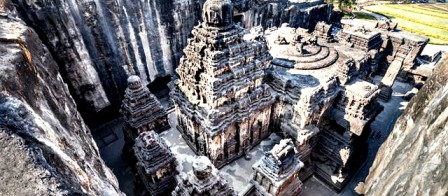Sixteen Mahajanapadas - History Study Stuff and Notes
History of sixteen Mahajanapadas:
In the 6th century BC, there were several states in ancient India that emerged during the Vedic age. This period saw socio-economic deviations along with religious and political developments in the Indo-Gangetic Plain. These permanent settlements paved the way for development from the janapadas to the Mahajanapada. By the sixth century BC, the center of major political activity may have shifted from the western part to the eastern part, including Bihar and eastern UP at the present time. The main reason for this change was the proximity of iron-producing centers, the geothermal land. of the region with better rainfall and rivers, also played an important role. In fact, it was the increasing use of iron tools and weapons, which enabled smaller states to become empire, called Mahajanapadas.
Political structure of these sixteen Mahajanapadas:
Most of these states were monarchies, but there were also some republics, known as "ganasangha". The governing body had an oligarchy for governance where the administration was headed by an elected king who was assisted by a large council. It was close to being called democracy, but the common man had no say in the administration.
There were 16 Mahajanapadas / kingdoms which are mentioned in ancient literature and scriptures. It should be noted here that these sixteen Mahajanapadas existed before the rise of Buddhism in India.
Sixteen Mahajanapadas are given here in quick form.
Now we will go into some detail about each of these sixteen Mahajanapadas and their capitals:
1.) Anga : This Mahajanapada is mentioned in the “Atharvaveda” and “Mahabharata”. During Bimbisara's reign, it was taken over by the Magadha Empire. It is located in present-day Bihar and West Bengal.
2.) Magadha : This is also found in the Atharvaveda which suggests that Magadha was a semi-Brahminical place. It was located close to Anaga in present-day Bihar, which was separated by the Champa River. Later, Magadha became the center of Jainism. Simultaneously, the first Buddha Council was held at the Rajagariha.
3.) Kasi : It was spread around Varanasi which was also the capital. It is believed that the city derives its name from the rivers Varuna and Asi as described in the Matsya Purana.
4.) Vatsa or Vamsa : Vatsa Mahajanapada followed the monarchical form of governance. This state was one of the sixteen Mahajanapadas. And its capital was located in Kaushambi. It was an important city for economic activities. There was a flourishing trade and business scenario in the 6th century BC. After the rise of the Buddha, the ruler Udayana made Buddhism a state religion and Vatsa was situated around present-day Allahabad.
5.) Kosala : located in the modern Awadh region of Uttar Pradesh and its capital was Ayodhya.
6.) Saurasena : Its capital was Mathura and was the center of Krishna worship at the time of Megasthenes. It was also a major follower of Buddha here.
7.) Panchala : Its capital was Ahichatra and Kampilaya in its peripheral and southern regions respectively. It was located in present-day western Uttar Pradesh. And it became a republic after the monarchy.
8.) Kuru : At present, their capital was Indraprastha in Meerut and Haryana. The area around Kurukshetra was the site of Kuru Mahajanapada. This later turned into a model of governance.
9.) Matsya : It was situated to the south of the kurus and west of the Panchalas. Its capital was in Viratnagar, which is around present day Jaipur.
10.) Chedi : It was mentioned in the Rigveda and its capital was Sothivati. It is around the present Bundelkhand region.
11.) Avanti : Avanti was important in the context of the rise of Buddhism. Its capital was located in Ujjaini or Mahishmati. It was located around present-day Malwa and Madhya Pradesh.
12.) Gandhara : The capital was at Taxila. The Gandhara are mentioned in the Atharvaveda as those who were highly trained in the art of warfare. This was important for international commercial activities.
13.) Kamboja : Its capital was known as Pooncha. It is located in present-day Kashmir and Hindukush. Various literary sources mention that it was a republic.
14.) Ashmaka or Assaka : The capital of this Mahajanapada was located in Pratishthana or Paithan. Ashmaka was situated on the banks of Godavari.
15.) Vajji : The capital was Vaishali and it was an important Mahajanapada. The main castes residing here were Licchavis, Vedehans, Jnatrikas and Vajjis.
16.) Malla : Malla was one of the sixteen Mahajanapadas. It is found in the 'Mahabharata', Buddhist and Jain texts. Their capital Kusinara was presently situated around Deoria and Uttar Pradesh.
The table above will help you in remembering the important places of these sixteen Mahajanapadas and their capitals.
This brief information about these 16 Mahajanapadas and their capitals will be very useful to solve the questions asked in various exams of students.
If you want us to add any more details to this article, please do let us know in the comments below.









3 Comments
Sir can u give this also in pdf and your notes is really helpful for me
ReplyDeleteSure, after some time you will also be provided a pdf file of all the notes.
DeleteOk sir
Delete